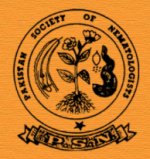Avian Parasitology in Captive Psittaciformes: A Study of Ascaridia spp. Infections in Gujranwala, Punjab, Pakistan
Avian Parasitology in Captive Psittaciformes: A Study of Ascaridia spp. Infections in Gujranwala, Punjab, Pakistan
Shahzadi Sarrah Atique and Ishrat Aziz*
ABSTRACT
Infections caused by Ascaridia spp. are commonly referred to as ascaridiosis. In parrots, diarrhea, weight loss, lethargy, intestinal blockage, and respiratory distress are examples of clinical signs of illness. In the present study, the prevalence and detection of Ascaridia spp. infection have been investigated in 110 parrots across nine species housed at the RASSA Bird Aviary and farm in Gujranwala, Punjab, Pakistan. The species examined included the Grey Parrot (Psittacus erithacus) (n=14), Cockatiel (Nymphicus hollandicus) (n=12), Senegal Parrot (Poicephalus senegalus) (n=12), Rump Parrot (Psephotus haematonotus) (n=14), Indian Ringneck Parrot (Psittacula krameri) (n=10), Lovebird (Agapornis spp.) (n=12), Sun Conure (Aratinga solstitialis) (n=10), Alexandrine Parrot (Psittacula eupatria) (n=14), and Australian Budgerigar (Melopsittacus undulatus) (n=12). In total, 45 out of 110 birds tested positive for Ascaridia spp., with a prevalence of 40.9%. Specifically, Ascaridia galli and Ascaridia platyceri were identified as the predominant parasites. The prevalence of Ascaridia galli was highest in Grey Parrots (21.4%), followed by Rump Parrots (21.4%), Alexandrine Parrots (14.3%), Sun Conures (10.0%), Indian Ringneck Parrots (10.0%), and Senegal Parrots (8.3%). No Ascaridia galli infections were detected in Cockatiels, Lovebirds, and Australian Budgerigars. The prevalence of Ascaridia platyceri was highest in Grey Parrots (50.0%), followed by Senegal Parrots (41.7%), Rump Parrots (28.6%), Alexandrine Parrots (28.6%), Sun Conures (30.0%), Cockatiels (25.0%), Lovebirds (25.0%), Australian Budgerigars (25.0%), and Indian Ringneck Parrots (20.0%).Notably, this study represents the first report of Ascaridia platyceri in Pakistan, highlighting its previously undocumented presence in the region. These findings emphasize the significant presence of Ascaridia spp. in captive parrots and highlight the need for effective management strategies to ensure their health and welfare.
To share on other social networks, click on any share button. What are these?





